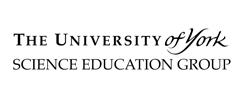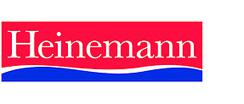- View more resources from this publisher
 University of York Science Education Group (UYSEG)
University of York Science Education Group (UYSEG)
Mining and Minerals
A Year Ten module from the Salters’ double award science course. The module begins with a survey of minerals world wide and their constituent elements. This provides opportunities for practice with symbols, formulae and equations. A practical simulation of geological mapping shows how ores are located, leading to a role-play exercise considering the environmental impact of a new mining development.
An exercise on the value of a mineral deposit introduces relative atomic masses and relative formula masses. Different ways of extracting metals are related to their chemical reactivity, and the idea of using electrolysis to extract very reactive metals is introduced. Ideas about ions and charges are applied to the extraction of aluminium, and an exercise on products from electrolysis of salt.
Section 1: Why are minerals important?
An exhibition of minerals is used to introduce their variety and importance. The use of geomagnetic surveying is demonstrated and instructions are given for analytical tests to show the presence of particular ions. The potential effects of mining on the environment are considered through a role-play.
Section 2: What is a mineral deposit worth?
Information about world production of minerals shows the importance of limestone. Experiments illustrate the reactions of limestone which are used to introduce chemical equations. Ideas about relative atomic mass and relative molecular mass are introduced. Copper oxide is reduced to determine its formula and a text exercise is used to calculate the value of the metal in a copper ore body.
Section 3: Extracting metals from minerals
Practical work on reduction of lead ore leads to study of when different metals came into use, which is linked to the difficulty of extracting them. There is a text exercise on the blast furnace and displacement reactions are demonstrated. Students electrolyse copper(II) chloride solution and electrophoresis is demonstrated.
Section 4: Understanding electrolysis
A text activity reviews the vocabulary used to describe electrolysis. The electrolysis of “water” is demonstrated and practical work on electrolysis of slat leads to discussion of the uses of the products. Students electrolyse copper(II) sulphate solution and carry out a text activity on the extraction of aluminium.
Pages from the second edition of the teachers' and technicians' pack are included at the end of Section 4.
Show health and safety information
Please be aware that resources have been published on the website in the form that they were originally supplied. This means that procedures reflect general practice and standards applicable at the time resources were produced and cannot be assumed to be acceptable today. Website users are fully responsible for ensuring that any activity, including practical work, which they carry out is in accordance with current regulations related to health and safety and that an appropriate risk assessment has been carried out.
Downloads
-
Mining and minerals 8.98 MB





